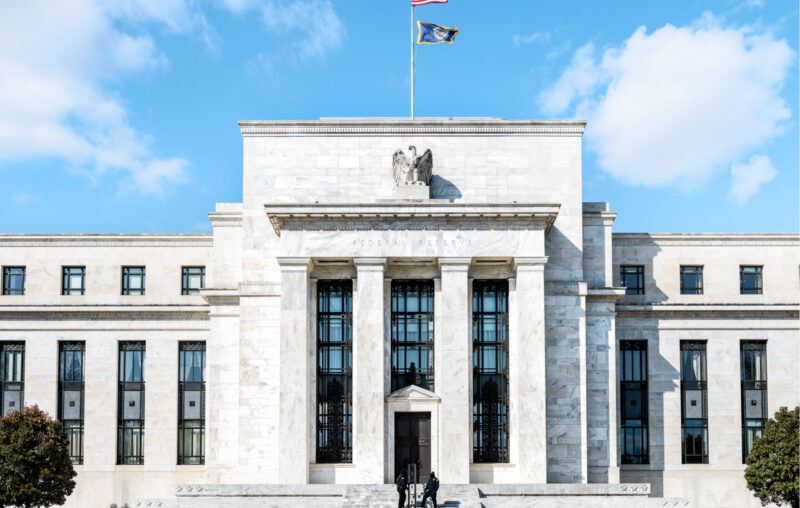Problems of Federal Reserve Policy—and How to Solve Them

The U.S. government is constantly expanding its influence on the economy, including the monetary system. With inflation on the rise, political tensions high and congressional dysfunction in Washington, D.C., what should we expect from our central bankers and monetary institutions? How can we get monetary policies that will benefit ordinary Americans?
A new book tackles these questions with vivid historical examples and surprisingly uncommon “commonsense” economics. “Money and the Rule of Law” by Peter Boettke, Alexander Salter and Daniel Smith discusses the difficulties of central banking, especially when decisions are made according to subjective discretion rather than stable, predictable rules.
As the central bank of the United States, the Federal Reserve (the Fed) manages the supply of money in the economy, the most important determinant of short-term economic outcomes. While many economists love the idea of the federal government running the monetary system, Boettke, Salter and Smith explain a number of difficulties faced by central bankers that can make the economy worse, not better. As the authors describe, “Discretion in monetary policy is the reason central banking fails to live up to its lofty promises of economic and financial stability.”
Knowledge Problems and Political Incentives
One problem with central banks is that governments simply do not have the information or knowledge necessary to run a complex economy. The Fed uses aggregate statistics that may not represent underlying trends or up-to-the-minute changes affecting businesses and consumers.
Even if the data were accurate, there is no agreed-upon theory the Fed could use to manage the economy. How should it balance inflation and unemployment? How should it respond to supply-side shocks or to asset price booms? These questions cannot be resolved with economic science, meaning the Fed’s actions are, at least to some degree, purely guesswork. And because the Fed’s economic decisions vary depending on who the central bankers are, they are difficult to predict, increasing economic uncertainty and instability.
A second well-known problem is that government officials face political incentives. The authors provide many examples of Fed decisions driven by political motives instead of sound economics. These include poor monetary policy decisions, such as Fed Chair Arthur Burns’ capitulation to President Richard M. Nixon’s request to boost the economy in an election year, as well as the repeated accommodation of federal government debt and caving to special interests and powerful banks.
Historical Challenges
Historically, the Fed’s actions have increased the severity of economic downturns and financial crises. During extraordinary circumstances, the Fed has ignored its legal limitations and traditional guidelines in favor of whatever seemed viable at the time. For example, many economists, including former Fed Chair Ben Bernanke, agree that the Fed’s mistakes of the 1930s turned what would have been a regular recession into the Great Depression.
Boettke, Salter and Smith argue that the same thing occurred in the 2008 financial crisis. Ignoring traditional economic guidelines, the Fed’s emergency lending programs bailed out insolvent banks, increased risk in the financial system and magnified the credit crunch. Unconventional monetary policies of quantitative easing and paying banks interest on their reserves still cause economic distortions today.
There are simple ways to improve upon the discretionary, and often disastrous, decisions of central bankers. First, discretionary policy should be consistent and predictable so that consumers and businesses can plan for the future. Second, monetary policy decisions should be based on simple rules that are well known but also “robust,” meaning they can be effective without requiring discretionary actions even when things go wrong. Third, rules should be formalized to the greatest extent possible to form a “monetary constitution” that governs the monetary system by the rule of law, just as the legal system provides a foundation for commerce.
These guidelines would provide a stable and predictable monetary system resistant to the mistakes and politics that have plagued discretionary central banking. Although these lessons may seem clear to the casual reader, they are strongly contested by central bankers who prefer to maintain their discretionary powers.
To stabilize the economy, informed citizens must study the faults of discretionary central banking and call for reforms to protect against them. “Money and the Rule of Law” accomplishes the first goal. The second is up to us.
Reprinted from Discourse Magazine











